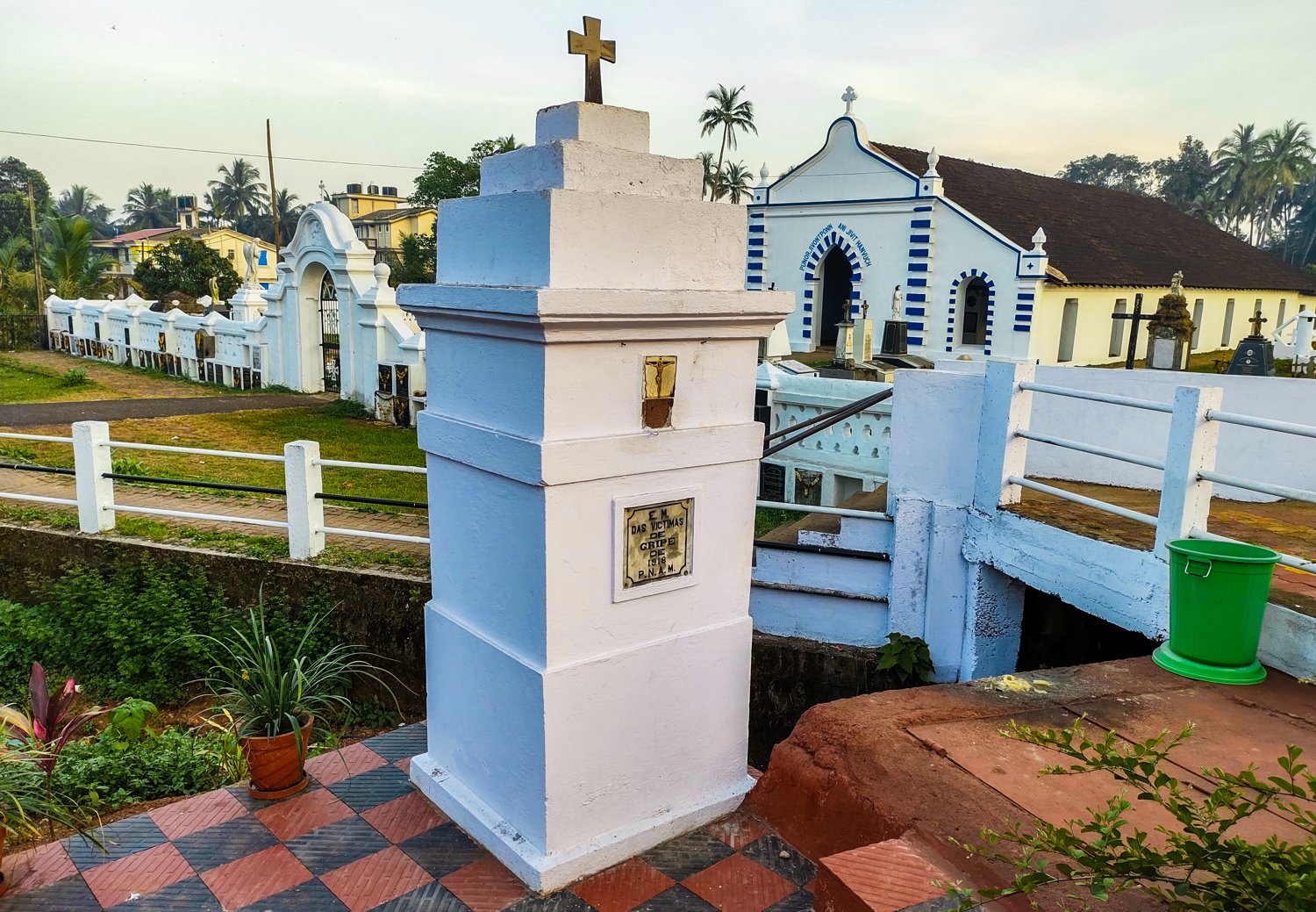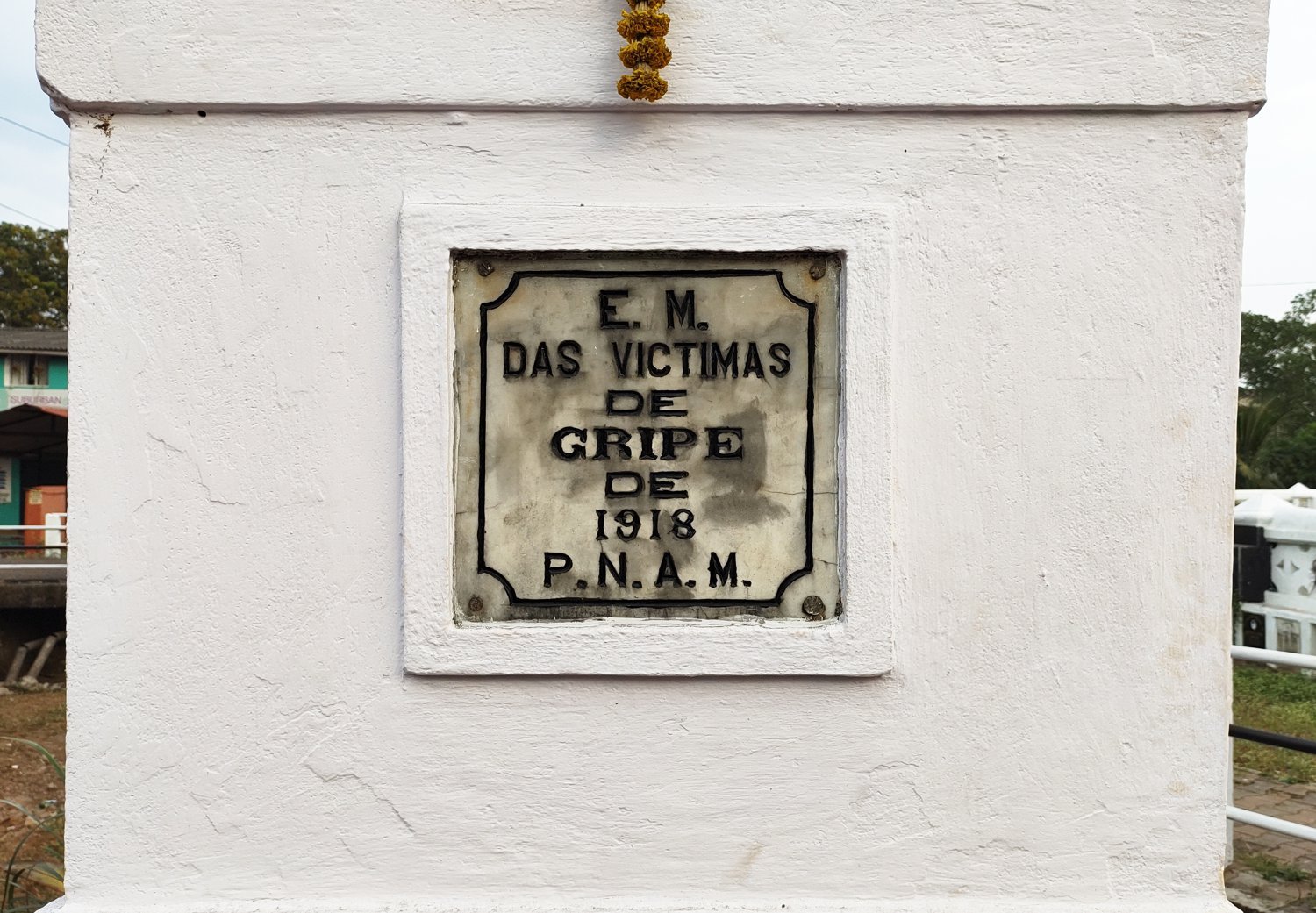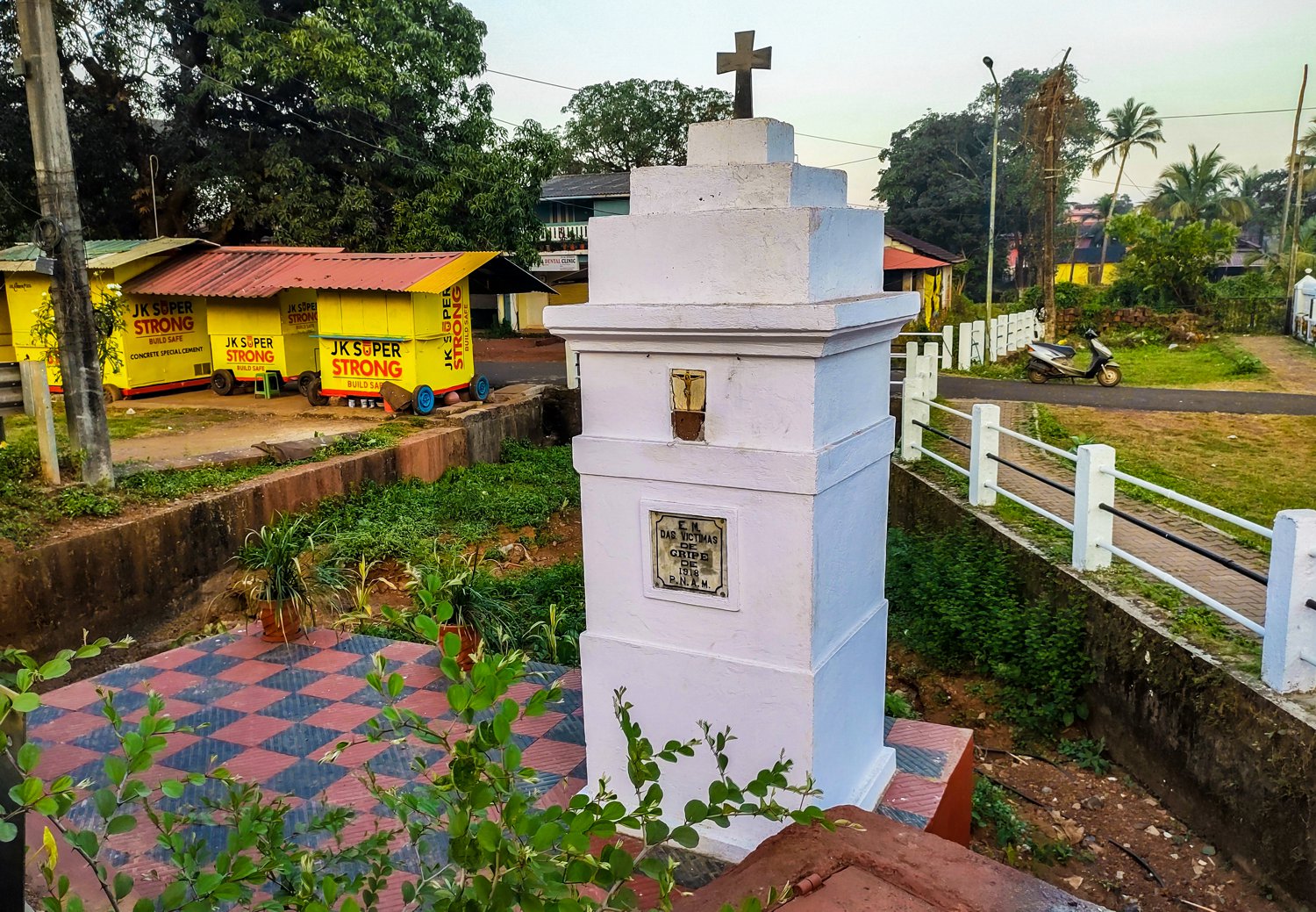
The Corona Virus has put the world on pause, sweeping across the globe, it continues to claim lives every single day. However, the 1918 (Spanish) Flu may have been the deadliest pandemics in human history, with a death toll ranging from anything between from 17 million to 50 million to possibly as high as 100 million.
Goa was also affected by this disease as it made its way across the world and a little monument was erected in memory of the victims of the flu just outside the cemetery in Raia.
A marble plaque on the monument reads, in Portuguese: “E M DAS VICTIMAS DE GRIPE DE 1918” translating to “In memory of victims of the flu of 1918”.
Thanks to Suraj Kamat and @thequizlabs for the information.
The story of little Quiterinha and her ‘mandri’.
Quiterinha Pimenta, was a 9 year old girl who lived with her family in the village of Loutolim, in the then Portuguese colony of Goa. Somewhere in the early 1900’s, Goa had the misfortune of being hit by a deadly epidemic of bubonic plague. One of Quiterinha’s uncles was the first in the Pimenta household to fall victim to the plague. Although he was highly contagious, Quiterinha’s mother looked after the sick uncle and unfortunately it wasn’t long before she too, along with her children fell ill.
The news soon reached the local Portuguese authorities who instructed the police to pay a visit to the Pimenta household. Having heard of the horrifying stories of shooting executions and culling of entire families who were sick, in an attempt to limit the spread of the disease, the members of the Pimenta family waited with bated breaths.
Early the next morning, the Portuguese Police arrived to find most of members of the Pimenta household just too far gone, desperately losing their battle with the ‘Black death’. But little Quiterinha was nowhere to be found. Somewhere in the back of the house, heeding the hushed instructions of her mother, Quiterinha lay deathly silent, while her mother hastily rolled her up in a ‘mandri’ in an attempt to hide her from the visiting gendarmes.
The police rounded up all the sick members of the household including Quiterinha’s mother, uncles and siblings. Only Quiterinha’s father who was away at work in the port town of Vasco was spared.
True to her word Quiterinha remained silently frozen within the ‘mandri’, shivering not only with the fever, but with the fear of being discovered. She lay there all day paralyzed with fear, until her father returned from work late in the evening to find the house empty, except for little Quiterinha, still rolled up in the ‘mandri’, still burning with fever.
He soon got the news that all the family members had been taken to the Asilo hospital in Mapusa, supposedly for treatment, but more likely to be killed by the meals served to the patients there, which were laced with poison when there was no hope of recovery.
Fearing that the Portuguese Police would come back for them, Quiterinha’s father quickly put a few things together, and with his sick daughter in his arms fled to the hills of Loutolim in the dead of the night.
As the seasons changed, the fury of the epidemic abated and Quiterinha and her father returned to their now empty home, their hearts filled with sadness, haunted with memories of their once bustling household. But through her tears, little Quiterinha’s eyes still shone bright with hope for her future.
Fast forward to over half a century later, and you find Quiteria now a grandmother to 43 grandchildren, playing ‘bisca’ with her granddaughter on the ‘balcao’, chuckling as she recounts the story of how a little girl hidden in a ‘mandri’, bathed by her mother’s love and prayers, cheated the Angel of death that fateful day.



